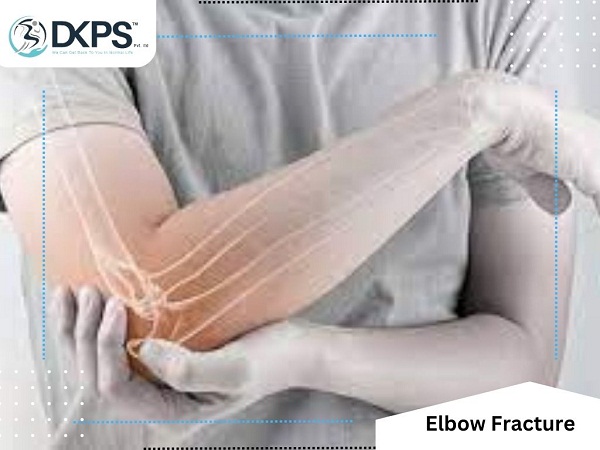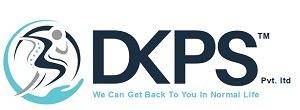- Home
- About Us
- DKPS Dealing
- BLOG
- Delhi NCR
- Delhi
- Physiotherapy at Home Near Me | Physiotherapist in South Delhi
- Best Chiropractor in Delhi
- Physiotherapist in Delhi
- Cupping Therapy in Delhi
- Home Nursing Services in Delhi
- Needle Therapy for Back Pain
- Sports Injury Physiotherapy
- Best Physiotherapist Visit at Home in Rohini Sector 24
- Physiotherapy at Home In Rohini Sector 9 |
- Physiotherapist in Pitampura | Physiotherapy at Home in Pitampura
- Physiotherapy at home in Rohini sector 29
- Physiotherapist in Paschim Vihar
- Physio home visit | Home Visit Physiotherapy |
- Physiotherapist in Saket | Best Physiotherapist in Saket |
- Physiotherapist In Janakpuri | Best Physiotherapist in Janakpuri |
- Best Physiotherapist in Punjabi Bagh | Punjabi Bagh Physiotherapist |
- Best Physiotherapist Service at Home in Dwarka, Delhi
- Best Physiotherapist in Chandigarh at Home Visit
- Faridabad
- Gurugram
- Noida
- Best Physiotherapy Gorakhpur
- Best Physiotherapist in Lucknow | Physiotherapist in Lucknow near me |
- Delhi
- Mumbai
- Delhi NCR
- Department
- Doctors
- Gallery
- Packages
- Contact Us
- Home
- About Us
- DKPS Dealing
- BLOG
- Delhi NCR
- Delhi
- Physiotherapy at Home Near Me | Physiotherapist in South Delhi
- Best Chiropractor in Delhi
- Physiotherapist in Delhi
- Cupping Therapy in Delhi
- Home Nursing Services in Delhi
- Needle Therapy for Back Pain
- Sports Injury Physiotherapy
- Best Physiotherapist Visit at Home in Rohini Sector 24
- Physiotherapy at Home In Rohini Sector 9 |
- Physiotherapist in Pitampura | Physiotherapy at Home in Pitampura
- Physiotherapy at home in Rohini sector 29
- Physiotherapist in Paschim Vihar
- Physio home visit | Home Visit Physiotherapy |
- Physiotherapist in Saket | Best Physiotherapist in Saket |
- Physiotherapist In Janakpuri | Best Physiotherapist in Janakpuri |
- Best Physiotherapist in Punjabi Bagh | Punjabi Bagh Physiotherapist |
- Best Physiotherapist Service at Home in Dwarka, Delhi
- Best Physiotherapist in Chandigarh at Home Visit
- Faridabad
- Gurugram
- Noida
- Best Physiotherapy Gorakhpur
- Best Physiotherapist in Lucknow | Physiotherapist in Lucknow near me |
- Delhi
- Mumbai
- Delhi NCR
- Department
- Doctors
- Gallery
- Packages
- Contact Us
Elbow Fractures
- Home
- Elbow Fractures

Elbow fractures-
Elbow fractures are a common injury that can occur from a variety of causes, including falls, sports injuries, and motor vehicle accidents. The elbow joint is made up of three bones: the humerus, radius, and ulna. When one or more of these bones break, it can result in an elbow fracture.
Symptoms of Elbow Fractures–
The symptoms of an elbow fracture can vary depending on the severity of the injury. Some common symptoms include:
Pain and tenderness around the elbow joint
Swelling and bruising
Limited range of motion
Difficulty or inability to move the elbow joint
Numbness or tingling in the arm or hand
Deformity or misalignment of the elbow joint
Types of Elbow Fractures-
There are several types of elbow fractures that can occur, including:
Olecranon Fracture:-
This type of fracture occurs when the bony protrusion at the back of the elbow (the olecranon) breaks. It can result from a direct blow to the elbow or a fall onto an outstretched arm.
Radial Head Fracture:-
This type of fracture occurs when the head of the radius bone in the forearm breaks. It can result from a fall onto an outstretched arm or a direct blow to the elbow.
Distal Humerus Fracture:-
This type of fracture occurs when the lower end of the humerus bone breaks. It can result from a fall onto an outstretched arm or a direct blow to the elbow.
Treatment for Elbow Fractures-
The treatment for elbow fractures depends on the type and severity of the injury. Some common treatment options include:
Immobilization:
For some types of elbow fractures, immobilization in a cast or splint may be sufficient to allow the bones to heal properly. This is often the case for minor fractures or hairline cracks.
Surgery
: For more severe elbow fractures, surgery may be necessary to realign the bones and ensure proper healing. This may involve the use of screws, plates, or pins to hold the bones in place.
Rehabilitation:
After the bones have healed, rehabilitation exercises may be necessary to improve the range of motion, strength, and function of the elbow joint.
Prevention of Elbow Fractures-
While it is not always possible to prevent elbow fractures, there are some steps that can be taken to reduce the risk of injury. These include:
Wearing Protective Gear:
If you participate in sports or other activities that put you at risk for elbow fractures, wear appropriate protective gear such as elbow pads.
Avoiding Falls:
Take steps to reduce the risk of falls, such as keeping your home well-lit and free of clutter, wearing appropriate footwear, and using handrails on stairs.
Maintaining Strong Bones:
Ensure that you are getting enough calcium and vitamin D in your diet to support strong bones.
Avoiding Repetitive Strain:
If your job or hobbies involve repetitive movements of the elbow joint, take breaks and stretch regularly to reduce the risk of injury. In conclusion, elbow fractures can be a painful and disruptive injury, but with proper treatment and rehabilitation, most patients can make a full recovery. If you suspect you have an elbow fracture, seek medical attention immediately to prevent further damage and ensure proper healing. By taking steps to prevent injury and following a comprehensive treatment plan, you can reduce your risk of future elbow fractures and maintain a healthy and active lifestyle.
How physiotherapy can help:-
Physiotherapy plays a crucial role in the recovery of elbow fractures. A licensed physiotherapist can help patients regain the range of motion, strength, and function of the affected elbow joint, reduce pain and swelling, and prevent the risk of future injuries.
Here are some ways in which physiotherapy can help with elbow fractures:
Manual Therapy:
Manual therapy techniques, such as massage, mobilization, and manipulation, can help to reduce pain, stiffness, and swelling in the affected elbow joint. A physiotherapist can also use techniques to realign the bones and soft tissue to promote proper healing.
Range of Motion Exercises:
After an elbow fracture, patients may experience stiffness and limited range of motion in the affected joint. Physiotherapy can help to improve flexibility and range of motion through exercises such as gentle stretches and joint mobilization techniques.
Strengthening Exercises By DKPS Physiotherapy:
Strengthening exercises can help to improve the strength and stability of the muscles around the affected elbow joint, which can help to prevent future injuries. These exercises may include resistance training, weight-bearing exercises, and isometric exercises.
Functional Exercises:
Functional exercises focus on improving the patient’s ability to perform daily activities using the affected elbow joint. These exercises may include activities such as lifting, carrying, and reaching.
Pain Management Techniques:
Physiotherapists can use various pain management techniques, such as heat therapy, cold therapy, and electrotherapy, to reduce pain and swelling in the affected elbow joint.
Some exercises that may be recommended by a physiotherapist to aid in the recovery of elbow fractures include:
Wrist Flexor Stretch:
Hold your affected arm straight out in front of you, palm down. Use your other hand to gently pull your fingers back toward your wrist until you feel a stretch in your forearm. Hold the stretch for 15-20 seconds and repeat 2-3 times.
Wrist Extensor Stretch:
Hold your affected arm straight out in front of you, palm up. Use your other hand to gently press down on your fingers until you feel a stretch in your forearm. Hold the stretch for 15-20 seconds and repeat 2-3 times.
Elbow Flexion Stretch:
Stand facing a wall with your affected arm extended behind you and your palm against the wall. Slowly lean forward until you feel a stretch in your bicep muscle. Hold the stretch for 15-20 seconds and repeat 2-3 times.
Elbow Extension Stretch:
Stand facing a wall with your affected arm extended in front of you and your palm against the wall. Slowly lean forward until you feel a stretch in your tricep muscle. Hold the stretch for 15-20 seconds and repeat 2-3 times.
Bicep Curls:
Hold a lightweight in your affected hand with your palm facing up. Slowly curl your arm up towards your shoulder, keeping your elbow close to your body. Lower the weight back down to the starting position and repeat for 10-15 reps.
Tricep Extensions:
Hold a lightweight in your affected hand with your palm facing down. Slowly extend your arm behind you, keeping your elbow close to your body. Lower the weight back down to the starting position and repeat for 10-15 reps.
In conclusion, physiotherapy is an essential component of the recovery process for elbow fractures. By following a comprehensive treatment plan that includes manual therapy, range of motion and strengthening exercises, and functional exercises, patients can improve their range of motion, strength, and function of the affected elbow joint and prevent future injuries. If you have suffered an elbow fracture, consult with a licensed physiotherapist to develop an individualized treatment plan that meets your specific.
How Drsinghphysiocare Can Help You:-
Drsinghphysiocare.com has very experienced physiotherapists well-versed in modern manual techniques and rehabilitation protocols. Moving patients from one place to another is complicated and can even increase the damage. Drsinghphysiocare.com offers physiotherapists home visits to rehabilitate patients in the comfort of their homes. Regular home physiotherapy by our physiotherapist helps patients actively and vigorously return to independence.
Senior physicians select our talented and experienced physiotherapists after they meet our strict recruitment standards. As a result of our higher standards and quality of service, many patients have recovered from the comfort of their homes and saved their valuable time and
Check Related Articles-
Additional Links
For More Articles
DKPS Physiotherapy services at Home
Contact Us
-
Rohini Sector 25 Pocket
1 Plot no 136
